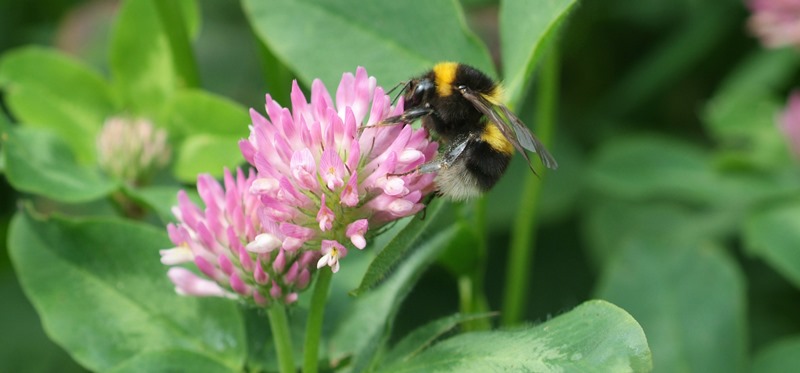Advances in red clover breeding gives farmers vital homegrown alternative to bought-in protein

Red clover. In recent years new varieties exhibiting greater persistence have already emerged from the IBERS red clover breeding programme, with AberClaret and AberChianti now on the Recommended Grass and Clover List (RGCL)
25 July 2017
Improvements in the disease resistance and persistency of red clover are significant factors in the increased use of this high value protein crop across UK livestock businesses, according to Professor Athole Marshall, Head of Plant Breeding at IBERS Aberystwyth University.
Speaking at the Royal Welsh Show in Llanelwedd this week, Professor Marshall said that a greater focus on producing homegrown protein would be an important strategy for dairy, beef and sheep farms to ensure future sustainability, with red clover having a major part to play.
“Uncertainty over support payments post-Brexit and the inevitability of continuing commodity price volatility mean that livestock farms need to become more self-reliant,” he said. “Including highly productive legumes such as red clover in rotations will not only mean more home-produced protein but will also reduce the requirement for artificial nitrogen fertilisers.”
Red clover is a high protein forage legume capable of high dry matter yields (12-15tDM/ha) at 18 - 22% crude protein when grown in most parts of the UK. In the mid-1970s, seed sales peaked at around 3,000 tonnes/year, but in the mid-1990s it was less than 100 tonnes annually, due to its susceptibility to diseases such as sclerotinia and stem nematode and the relatively low cost of nitrogen fertiliser.
Seed sales are now on the increase, with current demand pointing towards annual sales of 500 tonnes/year.
“There is increasing interest in red clover, and modern varieties are making it a better proposition for livestock farmers,” added Professor Marshall. “The latest varieties from the IBERS breeding programme will persist in swards for four to five years, making them far more compatible with medium term leys than has traditionally been the case, and we are now seeing varieties emerging from the programme with greater resistance to the main diseases.”
IBERS plant breeders are using molecular techniques to speed up the selection process and minimise the field evaluation necessary to identify the advanced genetics. The current breeding programme is focused on selecting for red clover with resistance to stem nematode and sclerotinia, whilst maintaining other agronomically important characteristics.
“Resistance to these two major diseases is being combined with other important traits by back-crossing into elite breeding material,” explains Professor Marshall. “Genetic markers will be used to help us follow the pedigree of the selected material and thus minimise issues with in-breeding and prevent selection of resistant – but agronomically inferior – material.”
In recent years new varieties exhibiting greater persistence have already emerged from the IBERS red clover breeding programme, with AberClaret and AberChianti now on the Recommended Grass and Clover List (RGCL). These varieties have proven ability to yield significantly into their fourth and fifth harvest years compared with the two to three years duration more typical of red clover.
There will be a presentation on red clover in the IBERS Aberystwyth University marquee - stand number CCA795 – on Tuesday 25 July at 2.30 pm. All welcome.



